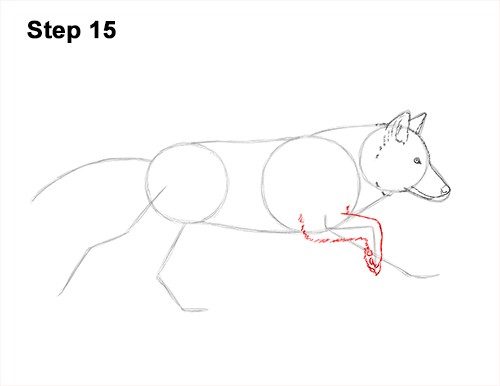
Step 15: Use the angled line under the circle on the right as a guide to draw the wolf's first front leg. Follow the path of the guide and lightly sketch the shape of the leg around it. Curve the shape downward to create the joint and the foot hanging down. When you get the shape of the leg right, darken the lines. Use short strokes along the lower edge of the leg for the longer fur. Draw a couple of curved lines on the left side of the foot for the padding on the paws. At the bottom of the shape, draw a couple of U-shaped lines that come to a point for the toes and nails.
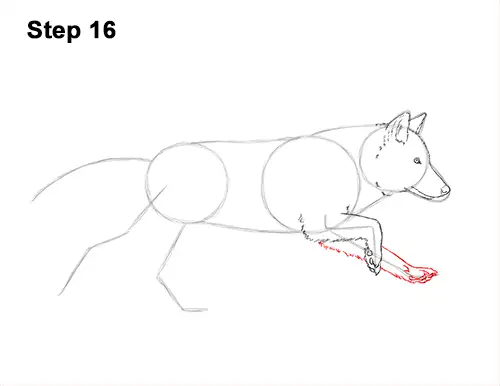
Step 16: Use the sloping line under the circle on the right as a guide to draw the other front leg. Follow the path of the guide and draw the shape of the leg around it. When you get the shape right, darken the lines. Don't overlap the shape of the first leg. At the bottom of the wolf's paw, draw a few curved lines for the padding. At the tip of the paw, draw a couple of curved lines that end in a pointy tip for the toes and nails. Add the dewclaw higher up the foot.
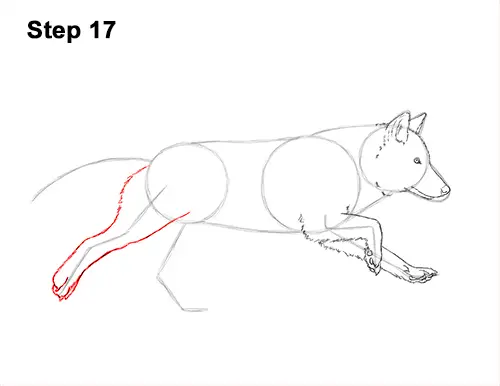
Step 17: Use the angled line on the far left side as a guide to draw the wolf's first hind leg. Draw the shape of the leg around the guide. Curve the shape where the guide bends to create the joints. When you get the shape right, darken the lines. Use short strokes on the left edge for the fur. At the bottom, draw a couple of U- shaped lines for the individual toes. On the bottom edge of each toe, draw a pointy tip for the wolf's nails. The overall shape of the leg should be wide at the top and gradually get thinner toward the bottom.
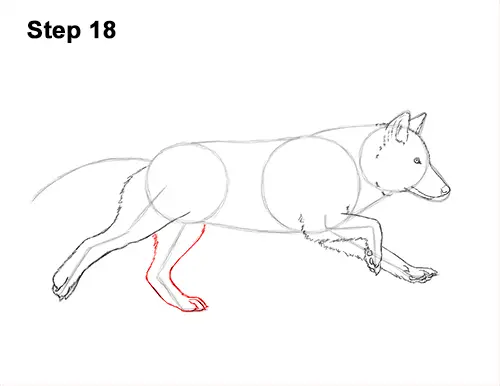
Step 18: Use the last angled line under the body as a guide to draw the other hind leg the same way. Lightly sketch the shape of the leg around the guide. Curve the shape near the middle to form the joint. When you get the shape right, darken the lines. Use short strokes along the left edge, at the top. This is the only leg that is in contact with the ground, so make the paw flat at the bottom. Draw a couple of curved lines at the tip of the foot for the wolf's individual toes. The shape of the leg should be wide at the top and gradually get narrower toward the bottom.
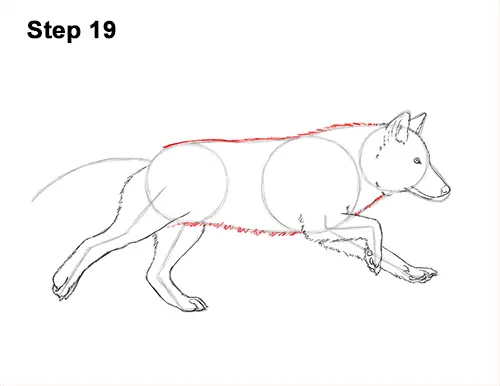
Step 19: Use the remaining lines and shapes as guides to draw the rest of the running wolf's body. Use short strokes to darken the top edge of the initial guide to create the back. Use slightly longer strokes along the lower edge of the guides for the fur on the underside of the body. Wolves have thicker coats in the winter, so you can make these strokes even longer for shaggier fur.







